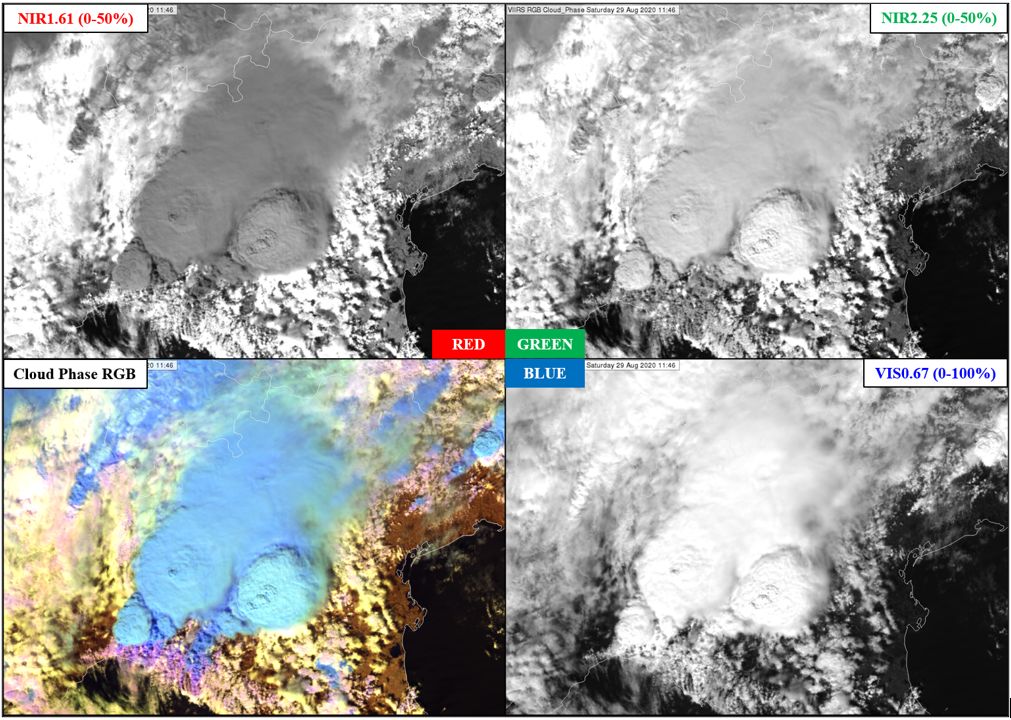Chapter III: How the Cloud Phase RGB is created
How the Cloud Phase RGB is created
The Cloud Phase RGB combines cloud optical thickness and cloud top microphysics information: VIS0.6 provides cloud optical thickness information, while NIR1.6 and NIR2.25 together provide cloud top microphysics information. NIR1.6 and NIR2.25 provide different information: NIR1.6 depends more strongly on phase, while NIR2.25 depends more strongly on particle size. Together they can provide improved phase information, see Fig 2.6.
The 'recipes' of the Cloud Phase RGB, tuned for three satellite instruments, are listed below. The tables show which channel to visualise in which primary colour and also how to enhance them. The calibrated data should be linearly stretched within the reflectivity ranges shown in the table. Non-linear stretching is not required as Gamma is always equal to 1.
Recipe of VIIRS Cloud Phase RGB:
Recipe of Himawari/AHI Cloud Phase RGB:
Note that Daniel Rosenfeld (HUI) suggested 0-40% ranges for the red and green colour beams for Himawari/AHI data.
Recipe of GOES/ABI Cloud Phase RGB:
An example Cloud Phase RGB and its components are seen in Fig 3.1:
Fig. 3.1a: Example VIIRS Cloud Phase RGB and its components, northern Italy, 29 August 2020, 11:46 UTC
Fig. 3.1b shows the same images as Fig. 3.1a except the three components are visualized in their respective colours instead of shades of grey. This is how the three components are visualized together in the RGB.
Fig. 3.1b: Example VIIRS Cloud Phase RGB and its components, 29 August 2020, 11:46 UTC
Fig. 3.1c shows the four panels of Fig. 3.1a on top of each other. Hover your mouse over the image to use the slider.
Fig. 3.1c: 4-Panel display, please use your mouse to compare the four images. VIIRS Cloud Phase RGB and its components: NIR1.6, NIR2.25 and VIS0.64 images enhanced according the recipe. Images taken on 29 August 2020 at 11:46 UTC.








